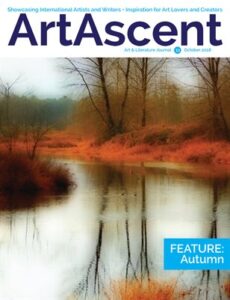Autumn on the Lower East Side
My essay, Autumn on the Lower East Side, published in Artascent.
There are many street trees on the Lower East Side of Manhattan today, but when I was growing up there in the 1960s, the only ones we had were the Norway Maples in our church’s graveyard. I passed them every day going to and from school. They were how I gauged the seasons. I loved seeing the buds on the branches overhanging the graveyard wall in spring. They announced the school year nearing an end and summer vacation not being far away. But then, watching the leaves turn brown and fall to the sidewalk in autumn meant I had a dreary school year ahead of me. I loved spring and summer and didn’t mind winter but dreaded the coming of autumn when it got dark earlier every night.
In autumn, I’d go up to the roof of our apartment building to feed my uncle’s pigeons before we had dinner because it would be too dark afterward. I’d let them have one last flight before locking them in for the night. My uncle had a separate section of the coop, where he kept twenty white tiplers. He loved to watch them circle the roof altogether in a flurry of white. Tiplers like to fly in a tight group and often go to great heights. When dusk’s shadow covered the city, they would be far enough aloft to be still glittering in the sunlight. I was sometimes afraid that they were so high and the city below so dark, they wouldn’t find their way back to our roof, but they always did. They were white, but when they were at that height, the sunset’s last rays colored them in hues of orange and yellow.
My mother made autumn seem to come earlier than it should when she’d take me shopping for clothes for the new school year in August. I still had a few weeks of summer left, but those shopping trips reminding me of the start of school put a damper on the end of my vacation. We’d go to the Orchard Street shopping district on the Lower East Side. Like a lot of other mothers and sons, we’d make our way past the “puller in” standing in front of the clothing stores asking, “Nice suit for the boy?” My mother was loyal to Jay & Ess, a men and boys shop run by two brothers that she had developed a shopping relationship with over the years. They were nice guys, and both had those blue tattooed numbers on their forearms, so common in Jewish neighborhoods then. As a reward for my shopping patience, we’d go to Julie’s Toy Store afterward. He carried a large stock of model trains and accessories, and I’d get something to add to my set. Depending on which end of Orchard Street we were on when we finished shopping, we’d either go to Katz’s Deli on Houston Street for frankfurters and a Doctor Brown’s Cream Soda or Stolsberg’s Dairy Restaurant on Grand Street for a mushroom omelet and an egg cream.
The one thing about autumn that I did look forward to were the feasts. They were held on the streets of Little Italy and celebrated various saints – Gondolfo, Cirro, Rocco, and others. They started as autumn harvest festivals in towns and villages in Southern Italy and were carried over to America by religious societies. Local people set up stands selling traditional zeppoles or grilled sausage and peppers. There was always at least one stand that had nuts, dried figs, and various confections. Torrone is a type of candy that’s so hard it has to be cut with a heavy knife hit with a hammer. Us kids stood by to catch the chips that tasted like honey and went flying with every hammer stroke. Non-locals who worked the carnival and state fair circuit showed up at the Italian feasts with games of chance where you could win a goldfish or a parakeet. The fish never lasted long, but I once won a parakeet I named Tweety that we had for years. Each feast usually lasted about a week, ending on the saint’s feast day. There were bands and processions but what I liked most were the fireworks on the last night. The fouchi dártficio were ground displays with pinwheels and fountains spouting smoke and flames in every color imaginable. It ended late, and the kids who stayed up to watch it were sleepy in school the next day.
Long after the pigeon coop was gone, I still went up to the roof. From the parapet at the corner of the building, I could look east for almost the entire length of Houston Street to the edge of Manhattan island. To the west, I could see the sun setting over the Puck Building, a large old factory that was once the home of Puck Magazine. With my roof already in its shadow, instead of flying the white tiplers like I used to, I flew a kite. There were no open fields on the Lower East Side, so if a kid wanted to fly a kite, a roof was the only place. The kite would climb above the autumn twilight and be brightly lit by the sun’s final glimmer. It was still summer up there where the kite flew.


